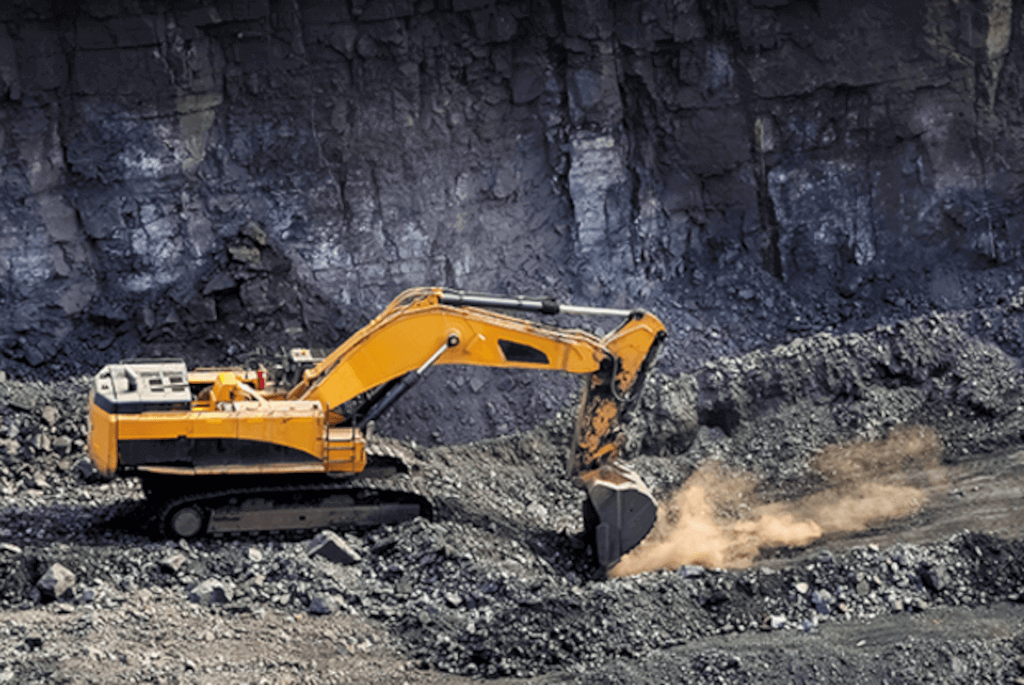South Africa has the largest reserves of Platinum-group metals (PGMs; 88%), Manganese (80%), Chromite (72%) and Gold (13%) known reserves in the world. It is ranked second in Titanium minerals (10%), Zirconium (25%), Vanadium (32%), Vermiculite (40%) and Fluorspar (17%). According to StatsSA “In 2019, the industry generated R527,5 billion in sales, with 61% (R323,8 billion) coming from abroad. Manganese ore exports dominated the market (96%) while coal sales were 61% local.”
Mining & The Economy
Economists are baffled by the recent mining stats brought to light. This is the very first instance in the last one hundred years where the mining sector contributed less than five percent to the overall GDP (Gross Domestic Product) of South Africa. If you compare this low fiver percent with the impressive twenty-three percent which the industry contributed in 1960 then the dramatic drop in value is clearly evident.
Mike Schussler, chief economist at www.economists.co.za, has further stated that this drop will affect more industries in the country than people imagine. This is because there are many different industries that market their offerings to the mining industry. While economists agree that while some decrease in the contribution that the mining industry makes to a country’s GDP over time is normal, the decline in South Africa’s situation has been dramatic and worrisome.
In relation to this decrease, there has also been a decrease in the number of jobs provided by the industry. The employment figures in the mining sector are in fact approximately twenty per cent less than it once was in 1962. A few of the contributing factors include the recent strikes that recently plagued the platinum industry as well as the fact that gold production has dropped. Coal, platinum and gold prices have dropped by quite a bit as well.
The mining industry directly affects many different industries and if this sector does not make a good and speedy recovery then other sectors will suffer as well. Without a strong mining industry, growth after the recent economic recession will be quite slow.
While there are some strong influences on the mining industry that come from abroad, there are also many local factors that strongly affect the sector. While there is nothing that one can do about the economic recession crippling many of the European county’s economies, the local issues can most definitely be addressed.
South Africa has been called a “world leader” when it comes to mining. The reason for this is simple: South Africa is and has always been rich in resources. South Africa contributes immensely with its minerals, especially platinum, gold, coal and diamonds.
When driving around South Africa you cannot help noticing small mining villages and massive mines with trains actively going about taking minerals away. They are dotted all over the country and with good reason. South Africa is proudly full of reserves of all kinds of minerals that are just waiting to be mined. It is thanks to all this mining that South Africa has developed the way it has into the best economy in Africa.
Sources differ with the time in which the first proper mine was set up, but the first mining company will be the one that was established in 1846, it was the first commercial mining company. The company was established in none other than Cape Town, which is a very busy trade post and has almost nothing to do with mining today, believing Namaqualand to be rich in copper.
1867 was the beginning of profitable mining in South Africa when a diamond was found on the banks of the Orange River, which in turn led to Kimberley pipes being found. After this, the next big discovery only happened in 1886 with Witwatersrand Gold Rush, which was apparently the biggest gold field created. Gold mining grew immensely over time, even till the early 20th century. South Africa still stands second with gold mining today.
Mining has given many South Africans employment and helped South Africa’s economy. With mining, South Africa is always somewhere in the top with exports. It stands second with gold and third with coal. It seems that South Africa is indeed rich in resources and quite a lot of these resources are highly important in our daily lives. Mining has slowly developed years back to where it is now, a world leader. Who knows how South Africa will grow in the mining industry in the next few years that lie ahead.
History of mining in South Africa?
South Africa relies on its mining industry to keep its economy going and strong. Mining really got going in South Africa in the eighteen hundreds with the discovery of a diamond in the vicinity of the Orange River. After that diamonds were discovered in the Kimberley area and the mining industry just exploded from then on. The people of those days started on journeys which were called gold rushes as soon as this mineral was discovered in the Witwatersrand area. South Africa’s mining was the most profitable in the world for quite a few years running. But considering that the resources are becoming depleted by the day, the country’s ranking is also sinking in the world standings.
Because of the extreme gold rushes of history, there were many foreigners also taking part in the wealth of South Africa back then.
Eventually, this led to friction between nations and culminated in the Anglo Boer War. This was a dark period in South African history, but it is good to learn from the mistakes that were made so that they are not repeated. Gold mining became a very large part of the growing economy in South Africa in the twentieth century and continued to expand as the years went by.
As it stands today, mining accounts for almost a quarter of South Africa’s GDP. South Africa also has a proudly South African company that is one of the world leaders in diamond mining and production. This company is known as De Beers. They are the largest producer of diamonds in Africa. South Africa is not only well known for its gold and diamond mines but also its coal and platinum mines.
Mining conditions have improved a lot since the early days of history, but some of the mines could still do a lot to improve their working conditions and safety measures. Unfortunately, South Africa has got some of the most unsafe mines in the world and many deaths occur there annually. On a lighter note, the government is taking steps to ensure safer mining environments in SA.
Contributed by HeyLink
Early Mining Pioneers in South Africa
Erasmus Jacobs discovered diamonds in 1867 on the Orange River. Pilgrims Rest and Barbeton experienced a massive gold rush and mining. South Africa mines manganese, chrome, vanadium, platinum, and vermiculite. South Africa is second in palladium, ilmenite, rutile, and zirconium. South Africa is the third-largest coal producer. South Africa’s economy depends on mining. In 1871, diamonds were discovered in Kimberley, South Africa, which attracted British and European banks. Cecil Rhodes, Alfred Beit, and Barney Barnato created the De Beer Consolidated Mines.
Cecil Rhodes founded Gold Fields in 1887. Rand Mines, Johannesburg Consolidated Investments, General Mining, and Union Corporation all emerged with gold mining in South Africa and were backed by diamond miners. Anglo American and AngloVaal were founded later, but they laid the groundwork for South Africa’s gold industry. The 1887 MacArthur Forrest process, which used cyanidation, made South African mining viable.
In the 1930s, Gold Fields located the West Wits Line west of Johannesburg. Anglo American developed the Orange Free State field in 1946 and the Evander in the 1950s. South Africa’s mining production declined in later years. Combining mines created super mines so development costs could be written off against profits.
Mining in South Africa is a huge industry that boosts the economy. In 1980, mining was the second most important industry, contributing 21% of the country’s GDP (GDP). 8% of the economy came from the industry in 2016. Agriculture’s contribution to the GDP decreased from 2% in 2015 to 2% in 2016, falling from seventh to tenth place.

